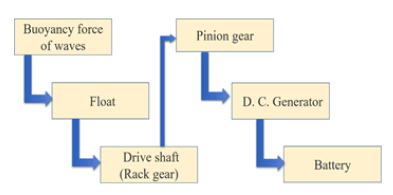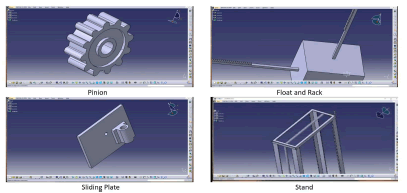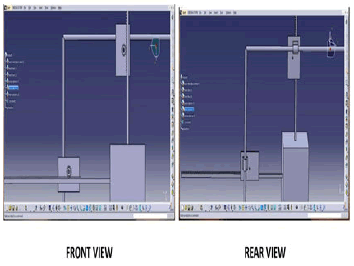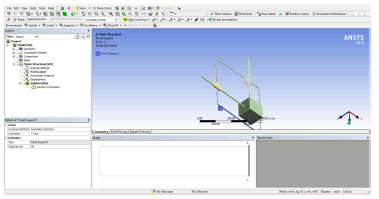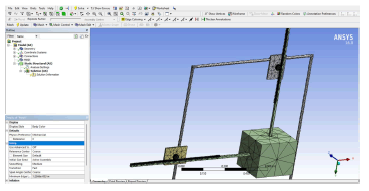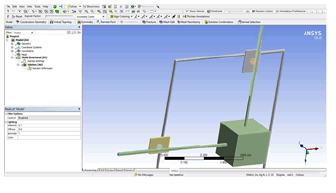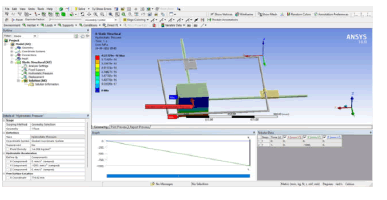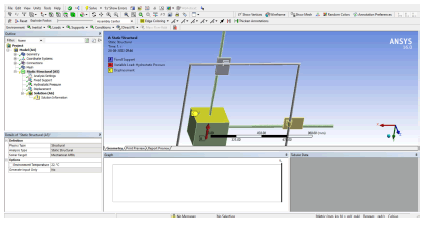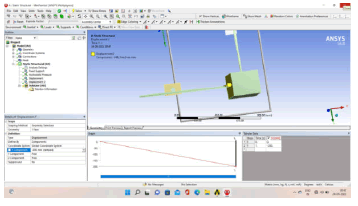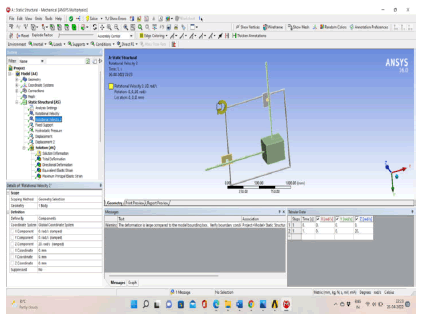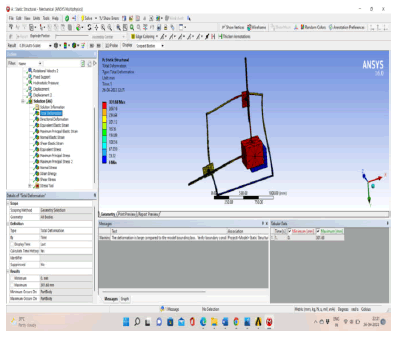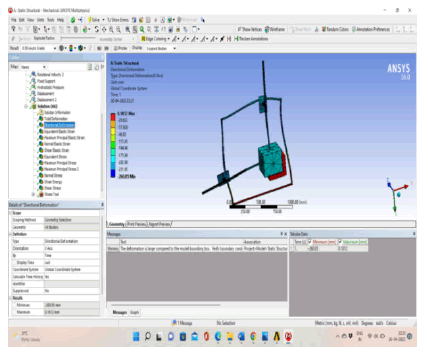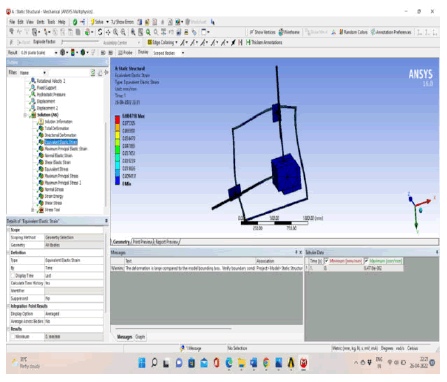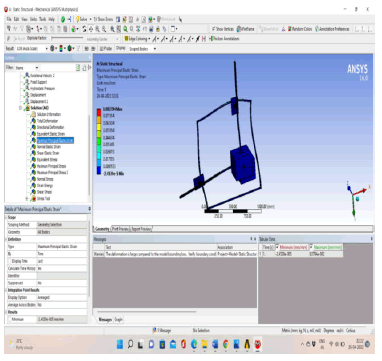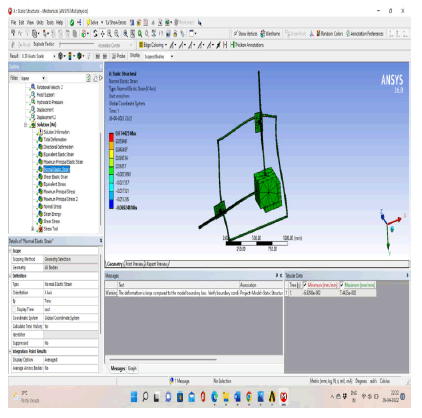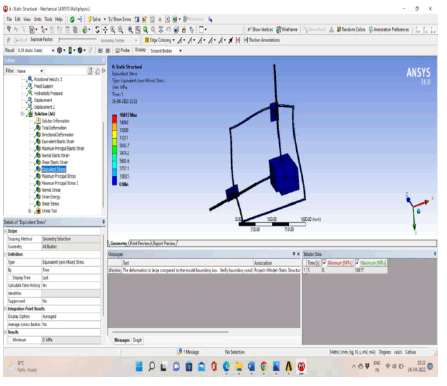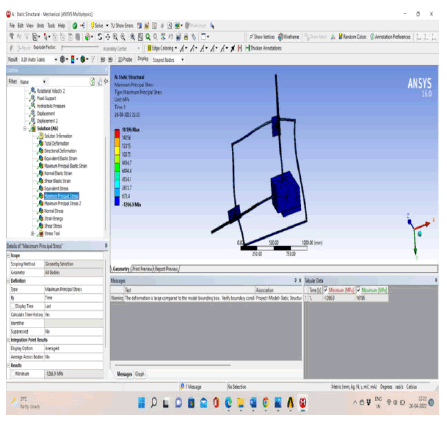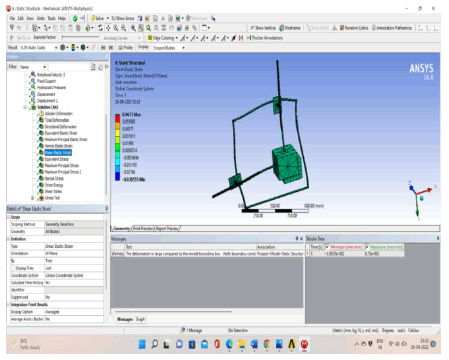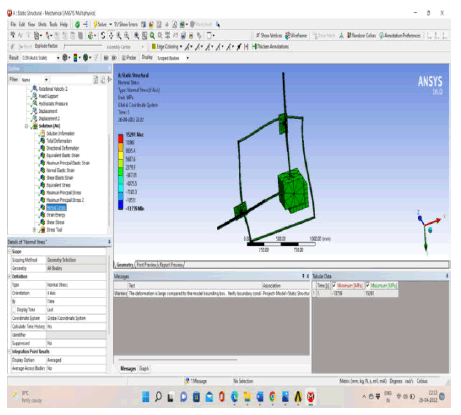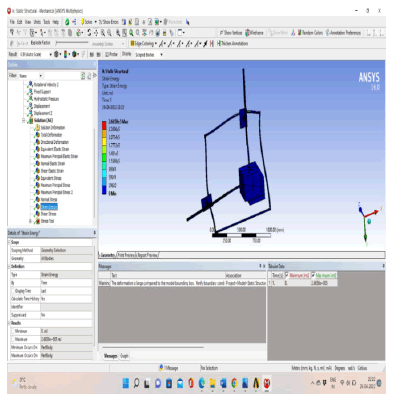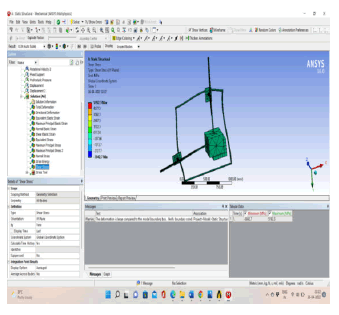Review Article, J Nucl Ene Sci Power Generat Technol Vol: 11 Issue: 5
Design and Analysis of Wave Power Electricity Generation System
Marvadi Rohit, V Naga Sudha*, Bevara Yaswanth, Matcha Vinay kumar and Munasala Ajay Babu
Department of Mechanical Engineering, Vignan’s Institute of Information Technology, Visakhapatnam, Andhra Pradesh, India
*Corresponding Author: Naga Sudha, Department of Mechanical Engineering, Assistant Professor Vignan’s Institute of Information Technology, Visakhapatnam, Andhra Pradesh, India, E-mail: rohithmaravadi@gmail.com
Received date: 18 April, 2022, Manuscript No. JNPGT-22-63350;
Editor assigned date: 20 April, 2022, Pre QC No. JNPGT-22-63350 (PQ);
Reviewed date: 04 May, 2022, QC No. JNPGT-22-63350;
Revised date: 11 May, 2022, Manuscript No. JNPGT-22-63350 (R);
Published date: 18 May, 2022, DOI:10.4172/2325-9809.1000283
Citation: Rohith M, S udha N, Yaswanth B, kumar MV, Ajay Babu M (2022) Design and Analysis of Wave Power Electricity Generation J Nucl Ene Sci Power Generat Technol 11:5. System.
Abstract
Electricity is the most utilizing energy source in the world and there is a great scarcity of electricity so there is an importance to meet renewable energy targets as the generation of electricity from swell energy is undeveloped even though technology is widely available. So modification of this system concept would be helpful to development and growth of the system. The main objective of this research paper is to eliminate the difficulties being faced by the other systems and to supply continuous electricity without any fluctuations. We convert the kinetic energy of waves into mechanical energy through our mechanical arrangements in our system then it is converted into electrical energy. This system is the modification of the previous wave energy conversion system where we convert both motions of the waves i.e., both forward and upward motion wave into electrical energy. From this system we can expect continuous electricity supply.
Keywords: Renewable energy resource, Electricity generation, Wave energy conversion, Rack and pinion, Dynamometer.
Introduction
Wave energy is the one of major renewable energy source of ocean based renewable energy that uses the power of the waves to generate electricity wave energy is the periodic up-and down movement of water because of force of winds [1-3]. There are various methods that generate electricity from the ocean based renewable energy sources like tidal energy, wind energy, wave energy, ocean current energy, Ocean Thermal Energy Conversion (OTEC). The most popular methods are point absorber oscillating water column, tidal lagoon power etc., this paper is about to eliminate the difficulties faced by other methods. The main problems faced by other systems are those are completely immersible in ocean which can cause corrosion or fouling of the system those systems include complex construction and are not economically feasible. These systems cause damage to ecosystems or it maybe get damaged by the ecosystems [4-6].
The main objective of this paper is to supply or generate electricity continuously without any fluctuations, comically feasible, these system useful to supply and distribution of electricity in remote areas where it is difficult to supply [7-10].
The problems occur with other types of ocean based renewable energy electricity generation systems are
• These systems are fully immersed which can cause corrosion, fouling
• These are not economically feasible
.• Continuous power output can’t be achieved (Fluctuations are occurred)
• These systems affect ecosystems or maybe these systems may effect by the ecosystem
Literature Review
Vivekraj M Solankia (2021): Design and development of ocean wave energy power generation system; to eliminates the existing limitations of wave energy converter methods and also helps the potential of this method for generating electricity. To utilize both motion of float we can solve this problem by designing the gearbox to produce continuous power with single generator.
Jugraj singh randhwana (2015): Ocean energy the future of renewable energy; review about background of tidal power uses advantages and design aspects of marine current turbine. Conversion of tidal energy into electricity on rotor turbine the technology available and developed `by using energy from oceans is limited to the sites that have significant quantity of tides or waves.
N Babu K Karthik (2017): Wave energy for desalination of plants; effective utilization of wave energy to run desalination plants using wave energy converters desalination plants face problems due to lack of power supply to overcome renewable energy source is used.
P Naveen kumar A Jai Prakash (2019) : Design and fabrication of power generation by combined wind and tidal turbine; areas necessary for further improvement in wind generation construction and working principle of these methods a transition from convention energy systems to those based on renewable sources is necessary to meet the ever increasing demand for energy and to address environment concerns.
Luther Sule1, Parabelem Tinno Dolf Rompas (2019): Oscillating wave energy power generator for lift net fishing boat this paper compares several designs of an oscillating wave power generator suitable for local net fishing boat in the waters of Tonyaman in the Strait of Makassar, Indonesia based upon the data of wave height data for the period of January to December 2016 and data on the structure of local fishing boats, the oscillating wave energy power generators most suitable for use in the local lift net fishing boats .
Md Mahbubur Rahman, Nirupom Paul, Shahrior Ahmed, Md Safi Rashed, and Md Saiful Islam: Power generation from sea wave: An approach to create renewable energy this paper presents a brief overview about the design benefits, risk and environmental impact of a sea wave power plant. The proposed plant is reliable, sustainable, environmentally friendly power extraction procedure from sea waves. It includes a number of empty vessels the empty vessels get up and down randomly due to the upward wave thrust each empty vessel is connected to a crank. Cranks are attached with a single shaft empty vessel moves up and down crank facilitates this linear motion of empty vessel into the rotation of shaft thus generation of electricity takes place by connecting to gear box.
Vicenzo Delhi colli (2006): Tubular generator drive for wave energy conversion this paper illustrates the operation of a tubularmachine drive as a linear generator for a heave-buoy wave energy conversion and briefly summarizes the principles of marine wave buoy interaction and reports the design analysis and control of a Permanent Magnet (PM) synchronous tubular linear machine based on a scaled generator prototype and on a rotating simulation test bench.
This paper presents the principle of the power transmission from the wave to the buoy and outlines a control approach intended to maximize both the wave-buoy and ac/dc power transfer resulting in an optimal overall conversion performance.
Temel Ozturk and Ayhan Demirbas (2006): Electricity generation using water lifting force this study has exhibited the advantage of electricity generation using water lifting force and explained how it is effectively used. The hydraulic ram is an attractive solution for electricity generation where a large gravity flow exists.
The wave conversion plant using buoyancy chambers is another solution for electricity generation using water lifting force. This study has exhibited the advantage of electricity generation using water lifting force and how it is effectively used.
An apparatus for the conversion of the energy of sea or ocean swells this paper relates to an apparatus adapted to convert energy from ocean swells (waves) typically to electrical energy the apparatus comprises: A frame including a vertical post and horizontal beam, a first generator slid ably connected to the vertical post, a second generator slid ably connected to the horizontal beam, a first pinion.
Connected to the first generator a second pinion connected to the second generator a float a connection mechanism for connecting the float to the generators a horizontal first rack connected to the float for engaging the first pinion a vertical second rack connected to the one float for engaging the second pinion, wherein all components connected to the float are disposed at or above sea level.
Methodology
In this system we convert the buoyancy force of wave into electric energy. The buoyancy force of waves acts on the float this cause the float to move upward or downward and forward or backward [11].
As our system contains rack and pinion gears connected to the float. The pinion gear is connected to the generator. Any cause of motion of float either upward or forward that linear motion will be converted into rotary motion through our mechanical arrangements (Figure 1).
Working Principle
In this system the buoyancy force causes the float to move in either of vertical or forward direction our mechanical arrangements in the system capture the motion of the float and convert that kinetic energy into mechanical energy as we connect dynamometer to the pinion gear [12]. We convert the mechanical energy into electrical energy Figures 2 and 3.
Design and Modeling
Analysis
Analysis is main part of the project to determine stress, strains, pressures acting on the arrangement of our mechanism in our wave power energy [13] generation system, mainly acting on the float, rack and pinion, sliding of the holding rod and stand Figure 4.
Firstly, the main design after assembly and simulation is to convert the CAT part product into the file to transfer into the geometry file of the Ansys software in the static structural in analysis systems and to we have the engineering data, geometry, model, setup, solution, result [14,15].
Meshing
Meshing is to cut out the part into the similar no of the shapes, generally now meshed our parts into the triangular meshing Figure 5.
Fixed Support
It is basically hinged at the bottom of the setup and it acts actually main components to move on the basis of the fixed stand main stand also called as frame consists of holding two steel rods and also support provided for the multi meter setup Figure 6.
Hydrostatic Pressure
Waves produces the pressure hydrostatic pressure and its acts on the surface of the contact which is on the wave float downward surface and the pressure which is acting on the float helps the float to displace in the vertical and horizontal directions Figure 7.
Displacements
There are two way of movements of the float vertical and horizontal displacements that we act in our project horizontal movement occurs when the waves transmits across the float it hit the side of the float and displaces the rack and pinion mechanism in horizontal direction. Horizontal movement occurs when the waves transmits across the float it hit the side of the float and displaces the rack and pinion mechanism in horizontal direction Figures 8a and 8b.
Rotational Velocities
Velocities of the pinion basically called as the rotational velocities in both the pinions, generally it is measured in rad/sec also called angular velocities. Thus we need to obtain rated speeds for the power generation in the generators Figure 9.
Results
Total deformation is the deformation option that you can see all the deformation results related to your model, in three coordinates(X, Y and Z) Figure 10.
In directional deformation, you can select a coordinate (X,Y or Z) to see the deformation result of your physical model in this direction Figure 11.
The equivalent elastic strain is defined as the limit for the values of strain up to which the object will rebound and come back to the original shape upon the removal of the load Figure 12.
This theory assumes that failure occurs when the maximum strain for a complex state of stress system becomes equals to the strain at yield point in the tensile test for the three dimensional complex state of stress system Figure 13.
Normal strain occurs when the elongation of an object is in response to a normal stress (i.e. perpendicular to a surface) and is denoted by the greek letter epsilon Figure 14.
Equivalent Stress theory also called distortion energy theory or von- Mises theory states that maximum equivalent stress at stress elements on material or part must be smaller from the yield strength of that used material Figure 15.
Maximum principal stress or major principal stress is the maximum value of normal stress acting on one of the principal planes where the value of shear stress is zero Figure 16.
Shear strain is the relative displacement in ratio of any perpendicular layer distance from a fixed layer Figure 17.
Normal stress might be useful is when you request stress on a surface that represents the cross-section of a part in tension Figure 18.
Strain energy is stored within an elastic solid when the solid is deformed under load. In the absence of energy losses, such as from friction, damping or yielding, the strain energy is equal to the work done on the solid by external loads Figure 19.
Shear stress, force tending to cause deformation of a material by slippage along a plane or planes parallel to the imposed stress Figure 20.
The minimum and maximum values of the all the deformations, stresses, strains, strain energy ranges we have calculated under the fluid density 1000 kg/m3 and the magnitute of 20 rad/sec in the rotational velocities of the pinions. Thus the results from the analysis helps us to the find out the pressure and placement of our setup in the ocean above the waves.
The power obtained upon testing the prototype on the wave genration setup is about 24-30 volts of voltage is generating in the setup. If we increase the scale as we go the main power system we can achieve upto 250 volts of voltage power in the system by the tidal energy.
Scope and Conclusion
As there is increase in demand for the electricity from renewable energy, to meet the necessary targets this system can be useful, In future this could be the major source of electricity generation. This system can be useful for supply of electricity for remote areas and can decrease the scarcity of electricity.
In this system we used both vertical and forward motion obtained from waves as the modification previous systems, so we can expect more efficiency than the previous systems, this system contains simple construction and more reliable. The analysis of float useful in the fabrication of the system as we can eliminate the failures of the system.
References
- Banker RD, Charnes A, Cooper WW (1984) Some models for estimating technical and scale inefficiencies in data envelopment analysis. Manag Sci 30: 1078-1092.
- Li M, Xie L, Wang Z (2019) A Transductive model-based stress recognition method using peripheral physiological signals. Energy Pol 19: 429-444.
- Li J, Li J, Zheng F (2014) Unified efficiency measurement of electric power supply companies in china. Sustainability 6: 779-793.
- Adebayo TS, Agboola MO, Rjoub H, Adeshola I, Agyekum EB, et al. (2021) Linking economic growth, urbanization, and environmental degradation in china: What is the role of hydroelectricity consumption?. Int J Environ Res Public Health 18: 6975.
- Rufael YW, Idowu S (2017) Income distribution and CO2 emission: A comparative analysis for China and India. Renew Sustain Energy Rev 74: 1336-1345.
- Wang R, Xiong Y, Xing X, Yang R, Li J, et al. (2020) Daily CO2 emission reduction indicates the control of activities to contain COVID-19 in China. Innovation 1: 100062.
- Chen JM (2021) Carbon neutrality: Toward a sustainable future. Innovation 2: 100127.
[Crossref] [Google Scholar ]
- Brown T, Hörsch J, Schlachtberger D(2018) PyPSA: Python for power system analysis. J Open Res Softw 6: 4.
- Weissbart C (2020) Decarbonization of power markets under stability and fairness: Do they influence efficiency?. Energy Econ 85:104408.
- Xiao M, Wetzel M, Pregger T, Simon S, Scholz Y (2020) Modeling the supply of renewable electricity to metropolitan regions in China. Energies 13: 3042.
- Katzner TE, Nelson DM, Diffendorfer JE, Duerr AE, Campbell CJ, et al. (2019) Wind energy: An ecological challenge. Science 366: 1026-1027.
- Winchester N, Reilly J (2019) The economic, energy, and emissions impacts of climate policy in South Korea. Clim Chang Econ 10:1950010.
- Hwang WS, Oh I, Lee JD (2014) Assessing the socio economic effects of Korea’s nuclear power policy. Energy Environ 25:931-952.
- Qi T, Zhang X, Karplus VJ (2014) The energy and CO2 emissions impact of renewable energy development in China. Energy Policy 68:60-69.
- Bengart P, Vogt B (2021) Fuel mix disclosure in Germany the effect of more transparent information on consumer preferences for renewable energy. Energy Policy 150: 112120.
 Spanish
Spanish  Chinese
Chinese  Russian
Russian  German
German  French
French  Japanese
Japanese  Portuguese
Portuguese  Hindi
Hindi 